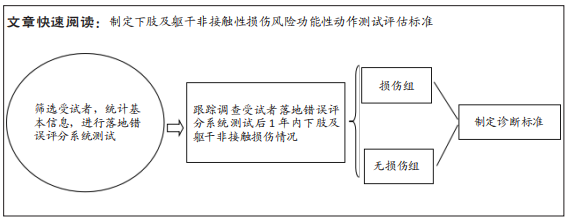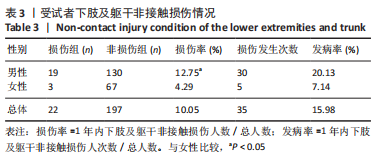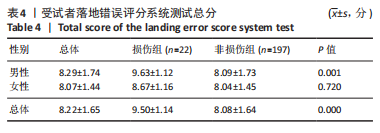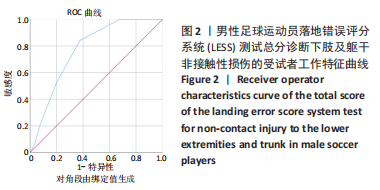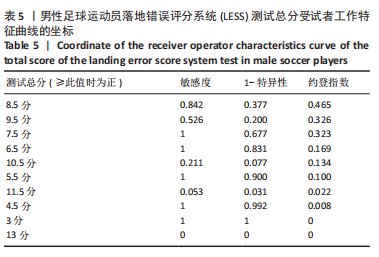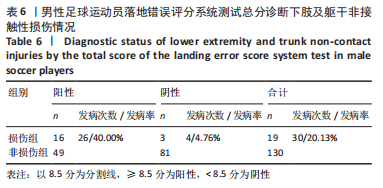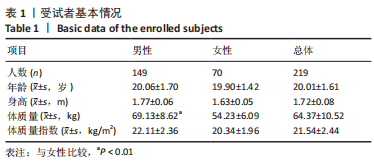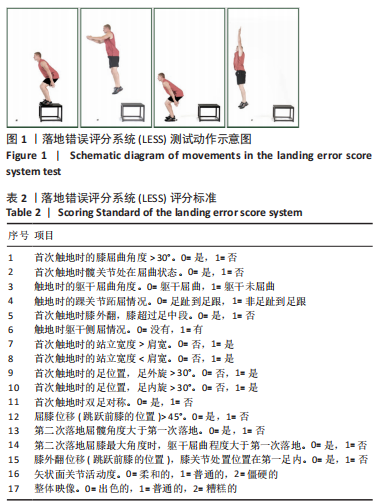[1] LINDENFELD TN, SCHMITT DJ, HENDY MP, et al. Incidence of injury in indoor soccer. Am J Sports Med. 1994;22(3):364-371.
[2] PADUA DA, MARSHALL SW, BOLING MC, et al. The Landing Error Scoring System (LESS) is a valid and reliable clinical assessment tool of jump-landing biomechanics: the JUMP-ACL study. Am J Sports Med. 2009; 37(10):1996-2002.
[3] ONATE J, CORTES N, WELCH C, et al. Expert versus novice interrater reliability and criterion validity of the landing error scoring system. J Sport Rehabil. 2010;19(1):41-56.
[4] HANZLÍKOVÁ I, HÉBERT-LOSIER K. Is the Landing Error Scoring System Reliable and Valid? A Systematic Review. Sports Health. 2020;12(2): 181-188.
[5] MARKOLF KL, BURCHFIELD DM, SHAPIRO MM, et al. Combined knee loading states that generate high anterior cruciate ligament forces. J Orthop Res. 1995;13(6):930-935.
[6] FONG DT, CHAN YY, MOK KM, et al. Understanding acute ankle ligamentous sprain injury in sports. Sports Med Arthrosc Rehabili Ther Technol. 2009;1(1):14.
[7] SIPE CL, RAMEY KD, PLISKY PP, et al. Y-Balance Test: A Valid and Reliable Assessment in Older Adults. J Aging Phys Act. 2019;27(5):663-669.
[8] GARRISON JC, BOTHWELL J, COHEN K, et al. Effects of hip strengthening on early outcomes following anterior cruciate ligament reconstruction. Int J Sports Phys Ther. 2014;9(2):157.
[9] SONG H, DAI X, LI J, et al. Hamstring Co-Contraction in the Early Stage of Rehabilitation After Anterior Cruciate Ligament Reconstruction: A Longitudinal Study. Am J Phys Med Rehabil. 2018;97(9):666-672.
[10] FERRAN NA, MAFFULLI N. Epidemiology of sprains of the lateral ankle ligament complex. Foot Ankle Clin. 2006;11(3):659-662.
[11] TABRIZI P, MCINTYRE WMJ, QUESNEL MB, et al. Limited dorsiflexion predisposes to injuries of the ankle in children. J Bone Joint Surg Br. 2000;82(8):1103-1106.
[12] BODEN BP, TORG JS, KNOWLES SB, et al. Video analysis of anterior cruciate ligament injury: abnormalities in hip and ankle kinematics. Am J Sports Med. 2009;37(2):252-259.
[13] BOLING MC, PADUA DA, MARSHALL SW, et al. A prospective investigation of biomechanical risk factors for patellofemoral pain syndrome: the Joint Undertaking to Monitor and Prevent ACL Injury (JUMP-ACL) cohort. Am J Sports Med. 2009;37(11):2108-2116.
[14] CORTES N, MORRISON S, VAN LUNEN BL, et al. Landing technique affects knee loading and position during athletic tasks. J Sci Med Sport. 2012;15(2):175-181.
[15] MALLIARAS P, COOK JL, KENT P. Reduced ankle dorsiflexion range may increase the risk of patellar tendon injury among volleyball players. J Sci Med Sport. 2006;9(4):304-309.
[16] LANKHORST NE, BIERMA-ZEINSTRA SMA, VAN MIDDELKOOP M. Factors associated with patellofemoral pain syndrome: a systematic review. Br J Sports Med. 2013;47(4):193-206.
[17] POLLARD CD, SIGWARD SM, POWERS CM. Limited hip and knee flexion during landing is associated with increased frontal plane knee motion and moments. Clin Biomech. 2010;25(2):142-146.
[18] SHIMOKOCHI Y, SHULTZ SJ. Mechanisms of Noncontact Anterior Cruciate Ligament Injury. J Athl Train. 2008;43(4):396-408.
[19] SMITH HC, JOHNSON RJ, SHULTZ SJ, et al. A prospective evaluation of the Landing Error Scoring System (LESS) as a screening tool for anterior cruciate ligament injury risk. Am J Sports Med. 2012;40(3):521-526.
[20] PADUA DA, DISTEFANO LJ, BEUTLER AI, et al. The landing error scoring system as a screening tool for an anterior cruciate ligament injury–prevention program in elite-youth soccer athletes. J Athl Train. 2015; 50(6):589-595.
[21] EVERARD E, LYONS M, HARRISON AJ. Examining the association of injury with the Functional Movement Screen and Landing Error Scoring System in military recruits undergoing 16 weeks of introductory fitness training. J Sci Med Sport. 2018;21(6):569-573.
[22] JAMES J, AMBEGAONKAR JP, CASWELL SV, et al. Analyses of landing mechanics in division I athletes using the landing error scoring system. Sports Health. 2016;8(2):182-186.
[23] LIMROONGREUNGRAT W, MAWHINNEY C, KONGTHONGSUNG S, et al. Landing Error Scoring System: Data from Youth Volleyball Players. Data Brief. 2022;41:107916.
[24] WESLEY CA, ARONSON PA, DOCHERTY CL. Lower Extremity Landing Biomechanics in Both Sexes After a Functional Exercise Protocol. J Athl Train. 2015;50(9):914-920.
[25] KUENZE CM, TRIGSTED S, LISEE C, et al. Sex Differences on the Landing Error Scoring System Among Individuals With Anterior Cruciate Ligament Reconstruction. J Athl Train. 2018;53(9):837-843.
[26] LAM KC, VALOVICH TC. The impact of sex and knee injury history on jump-landing patterns in collegiate athletes: a clinical evaluation. Clin J Sport Med. 2014;24(5):373-379.
[27] 高晓嶙,徐辉,黄鹏,等.我国橄榄球运动员Y平衡测试评估标准研究[J].中国运动医学杂志,2018,37(3):233-236+217.
[28] BODEN BP, SHEEHAN FT, TORG JS, et al. Non-contact ACL injuries: mechanisms and risk factors. J Am Acad Orthop Surg. 2010;18(9):520.
[29] [美]美国国家运动医学学会.纠正性训练指南[M].王雄,译.北京:人民邮电出版社,2019.
[30] LYLE MA, VALERO-CUEVAS FJ, GREGOR RJ, et al. Control of dynamic foot-ground interactions in male and female soccer athletes: females exhibit reduced dexterity and higher limb stiffness during landing. J Biomech. 2014;47(2):512-517.
[31] CHAPPELL JD, CREIGHTON RA, GIULIANI C, et al. Kinematics and electromyography of landing preparation in vertical stop-jump: risks for noncontact anterior cruciate ligament injury. Am J Sports Med. 2007;35(2):235-241.
[32] CAMERON KL, PECK KY, DAVI SM, et al. Association Between LandingError Scoring System (LESS) Items and the Incidence Rate of Lower Extremity Stress Fracture. Orthop J Sports Med. 2022;10(6): 23259671221100790.
[33] ECKARD TG, MIRALDI SFP, PECK KY, et al. Automated Landing Error Scoring System Performance and the Risk of Bone Stress Injury in Military Trainees. J Athl Train. 2022;57(4):334-340.
[34] CHOMIAK J, JUNGE A, PETERSON L, et al. Severe injuries in football players. Am J Sports Med. 2016;50(6):89-95.
[35] MCCALL A, JONES M, GELIS L, et al. Monitoring loads and non-contact injury during the transition from club to National team prior to an international football tournament: a case study of the 2014 FIFA World Cup and 2015 Asia Cup. J Sci Med Sport. 2018;21(8):800-804.
[36] 余宏,刘琰.振动训练足球运动者膝关节屈伸肌群肌肉的力量[J].中国组织工程研究,2019,23(15):2327-2331.
[37] 宋法明.不同膝关节贴扎类型对足球运动员急停动作稳定性的影响[J].中国组织工程研究,2017,21(10):1583-1588.
[38] ROOT H, TROJIAN T, MARTINEZ J, et al. Landing technique and performance in youth athletes after a single injury-prevention program session. J Athl Train. 2015;50(11):1149-1157.
[39] PRYOR JL, ROOT HJ, VANDERMARK LW, et al. Coach-led preventive training program in youth soccer players improves movement technique. J Sci Med Sport. 2017;20(9):861-866.
[40] KIANI A, HELLQUIST E, AHLQVIST K, et al. Prevention of soccer-related knee injuries in teenaged girls. Pol Arch Intern Med. 2010;170(1):43-49.
[41] POINTER CE, REEMS TD, HARTLEY EM, et al. The ability of the landing error scoring system to detect changes in landing mechanics: a critically appraised topic. Int J Athletic Ther Trai. 2017;22(5):133-147.
[42] SCASE E, COOK J, MAKDISSI M, et al. Teaching landing skills in elite junior Australian football: evaluation of an injury prevention strategy. Br J Sports Med. 2006;40(10):834-838.
[43] HERMAN DC, PRITCHARD KA, COSBY NL, et al. Effect of Strength Training on Jump-Landing Biomechanics in Adolescent Females. Sports Health. 2022;14(1):69-76. |
